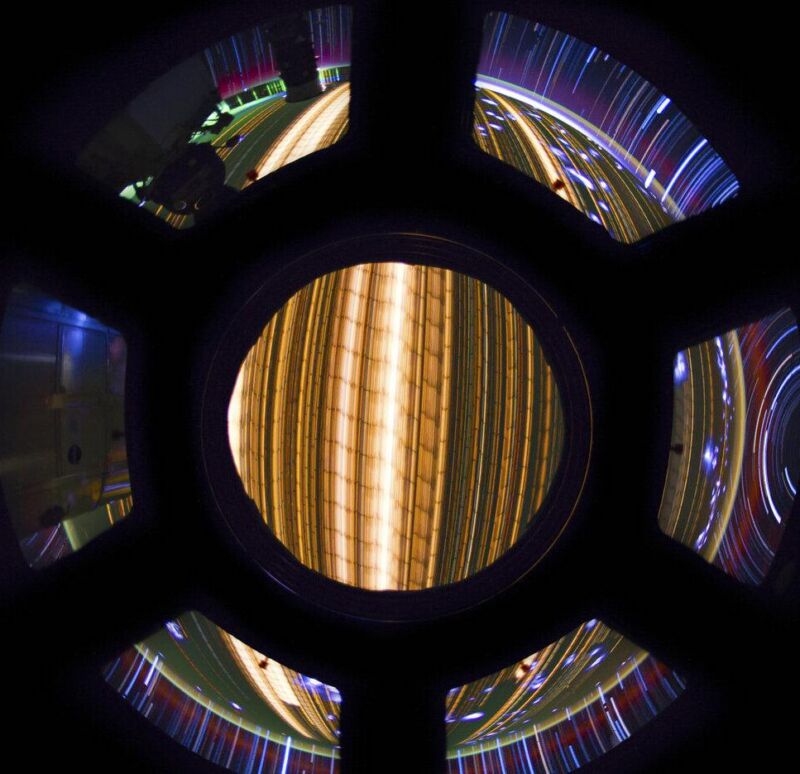
Don Pettit/reddit
Good morning. It’s March 19, and today’s photo comes from the International Space Station. NASA astronaut Don Pettit captured it during his most recent visit to the orbiting laboratory in 2012.
After sharing the photo online this weekend, Pettit described how he captured this effect:
Star trail view via fisheye lens from the Cupola module aboard the ISS. A 360 degree view of Earth’s horizon shows green airglow in the lower part of the atmosphere (from atomic oxygen emissions), faint red airglow above the green (also due to atomic oxygen), purple aurora, and the soon to rise sun. The green airglow is about 120km thick which includes most of what we think of as our atmosphere. Star trails move in circles to the right and left of our flight path while those in the direction of motion move in a straight line. Cities at night form streaks from our orbital motion with an occasional flash of lightning as the purple spots. Captured with Nikon D3s, 8mm f2.8 fisheye, ISO 3200, 25 minute time exposure assembled from 30 second frames.
A chemical engineer by training, Pettit was one of the real pioneers of astrophotography during his two previous stays on the ISS. He is also quite the tinkerer and inventor—the kind of person you’d like to have along on a journey to Mars because he could probably improvise a fix to most problems.
The good news is that Pettit is heading back to space later this year, in September, on a Soyuz spacecraft. When he returns to Earth next year, he will be just a month shy of his 70th birthday!
Source: Pettit on reddit
Do you want to submit a photo for the Daily Telescope? Reach out and say hello.




















+ There are no comments
Add yours